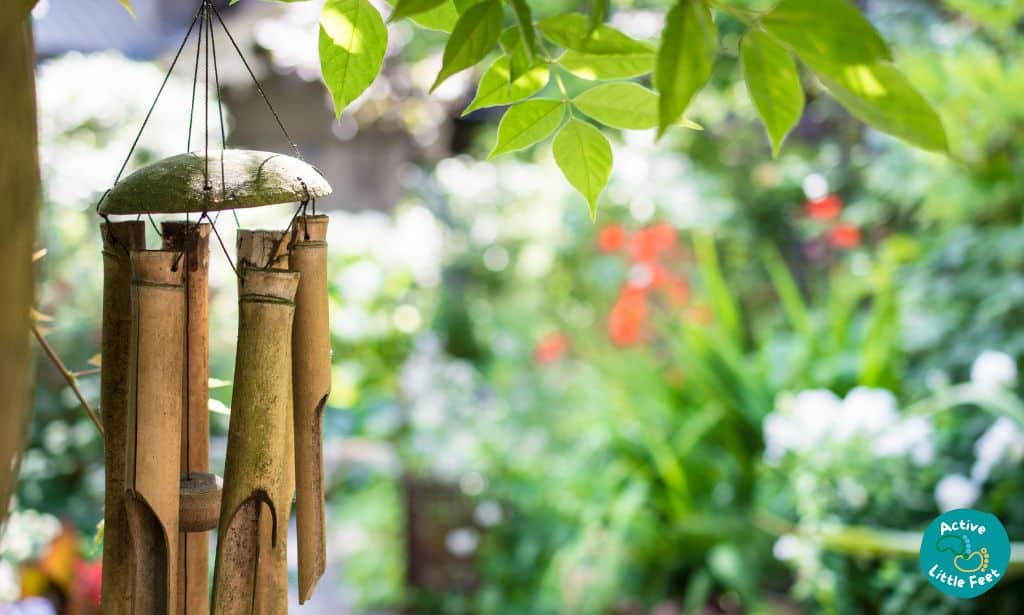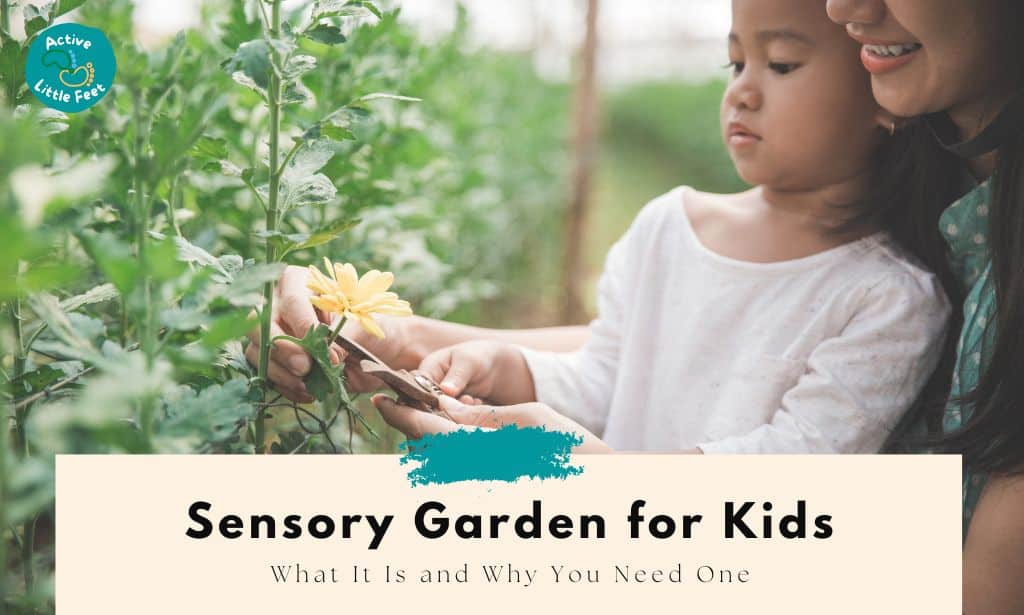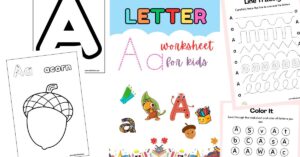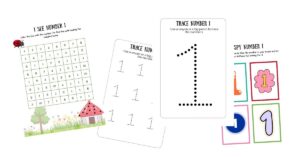As parents of an autistic child, one of the essential pieces of advice you get is to create a sensory garden for the child. It also benefits children with other special needs, especially those who struggle with sensory over or under-stimulation.
But what exactly is a sensory garden for kids?
A sensory garden is a carefully designed space meant to invoke all five senses. This stimulation occurs thanks to plants, water features, and other garden ornaments that engage one’s sense of sight, smell, sound, taste, and touch.
If you are considering creating a sensory garden, this post has everything you need to know and answers to all your questions.
What’s the Importance of a Sensory Garden?
The primary function of a sensory garden is to stimulate a child’s senses, one at a time or several simultaneously. It allows them to immerse in different sounds, textures, tastes, scents, and colors, which is critical for brain development.
For kids who suffer from sensory overstimulation due to Autism Spectrum, for example, a sensory garden helps to tame this by calming the child’s senses and mind and allowing them to tap into each sense individually.
On the other hand, this type of garden helps kids who experience under stimulation to get in touch with their senses in a safe space because it’s more focused. Read this to understand the in-depth differences between over and under-stimulation.
That aside, a sensory garden for kids has many other benefits;

1. It Helps to Regulate Emotions
Like adults, spending time in a scenic outdoor garden has a calming and therapeutic effect. As they spend more time there, they learn to focus their energy on something else when upset, to calm down, and to stop controlling what’s outside of themselves.
Kids learn to control their emotions without outside help and become calmer. This is especially helpful for autistic children who struggle with temper tantrums.
2. Improve Physical Fitness, Health, Mood, and Cognition.
Plant care, gardening, and all the activities kids do in the garden develop their fine and gross motor skills. In addition, exposure to physical activity, sunlight, and fresh air promotes a child’s health and well-being. Research shows that sensory play and nature improve cognitive abilities and mood.
3. Helps Kids with Disability
Sensory gardens have been proven to help kids and adults with sensory processing issues and other disabilities. It helps kids with anxiety, ADHD, fidgeting, and even depression. Studies also show it helps the child develop non-verbal communication and cooperative effort.
For kids who are deaf, blind, mute, or in a wheelchair, a sensory garden provides a space to explore their other senses and deal with specific issues.
4. Enhance Concentration
Last but not least, spending time in a sensory garden helps increase focus and concentration. Focusing on one sense at a time and learning to calm one’s mind and shut out distractions is the best way to improve a child’s attention span.

What Is In a Children’s Sensory Garden?
A sensory garden should include features and surfaces that stimulate all five senses. The central part will obviously be different types of plants, but you can add other elements like water, furniture, rocks, and playground features.
Let’s look at your different possibilities when planning a sensory garden for kids.
1. Edible Plants
A child’s sense of taste develops gradually over the first five years. Planting edible plants like tomatoes, strawberries, blueberries, and cherries is a great way to diversify their palette and encourage immersion in one sense.
Kids who love exploring things orally, blind children, and even autistic kids will benefit significantly from stopping somewhere to touch and taste a few fruits. You can also try edible herbs like chocolate mint, pineapple sage, lavender, and chamomile.

2. Colorful and Attractive Plants
Colorful plants serve two purposes in a sensory garden. One, they indulge your sense of sight, and everybody loves exploring the different colors of nature. Make sure you get as many colors as possible, from plants that bloom beautiful flowers to those with colorful leaves and stems.
The second purpose is to attract movement because of their color and scent. You want to add plants that attract birds, butterflies, and bees to create beautiful movement in your garden. Again, this is to indulge the sight and partly encourage physical activity.
Plants we are talking about here include Echinacea and hostas, lavender, sunflower, milkweed, and phlox.
3. Fuzzy Plants
The purpose of fuzzy or textured plants is to indulge the sense of touch. Visit your local nursery to find different textured plants like African violets, dusty miller, and bears paw. However, avoid harsh textures like cactus because you want your child to enjoy and get immersed in the pleasant feeling of touching that plant. Check out these additional leaf activities you can do with kids you’re in the garden.
4. Scented Plants
Lastly, invest in as many scented plants as possible. Feel free to go crazy with aromatic herbs like mint, parsley, and anything that smells delicious. Lavender, roses, and peppermint are all great ideas. You should spread them in different areas, so the smells don’t compete.
Other than plants, you must add other elements to serve different purposes. Some fantastic ideas include;

- Wind Chimes
The sense of sound is something plants cannot stimulate, even if you have big trees. Therefore, you must include a few things that allow a child to immerse in a particular sound. Wind chimes are a great example because they make a unique sound when the wind blows. For variety, incorporate chimes in different materials such as glass, metal, and bamboo.
- Water Features
While discussing sound, consider adding a water feature to the garden. The sound of a waterfall transcending from a wall, a fish pod, or a water fountain will make all the difference in someone’s mood and mental turmoil.
What’s more, the child can walk over and touch the water, play with it, and feel the drops fall on their face. For more on the benefits of water play, check out this article. Water features provide the most immersive experience because they simultaneously trigger different senses and provide a calmness that nothing else can.
5. Textures and Colors
Plants add an almost sufficient amount of texture and color, but you need more. Think of spaces where you can inject a bit more color and texture, such as adding colored stepping stones/rocks, creating a musical wall with a pegboard, and even textured art on the walls.
Use cable ties to hang colorful but calming elements all over the garden or hang potted plants on the walls. Also, consider using different items for your plants instead of planting everything directly on the ground. Sandboxes, raised beds, flower pots, and palettes are great alternatives.
6. Playground Elements
More than indulging the senses, a sensory garden should also be a place where a child lets free, plays, and has fun with others. Adding play elements like a swing, rocking chair, slide, or seesaw brings out the exciting part of the garden.
You will be surprised how much concentration and feelings it takes for a child to play alone in such a place.

7. Furniture
A small table and a few chairs will suffice. Your child will use this to have a meal, read something, paint, or rest. If the garden is sunny, you can place an umbrella over the table for shade.
We always place snacks and a few art supplies on the table when the kids spend time outdoors. We have a great article on drawing essentials every kid should have if you want to replicate the setting in your garden.
Factors to Consider when Designing a Sensory Garden for Kids
- The User. As you plan a sensory garden, consider who you are designing it for. Are they physically disabled, autistic, or struggling with concentration? Considering the user’s abilities makes it easy to know what elements to include. For instance, you will need a wheelchair lamp and wider paths if the child is in a wheelchair.
- Location of the Garden. Next, you’ll identify a quiet place with less traffic and distractions. A sensory garden will be useless if the child can hear and see all the commotion outside.
- Sunlight Position. This is important because most plants require sunlight for at least six hours. As you design, factor in the sun’s position to place the plants within its vicinity. You’ll also arrange the furniture where there’s shade.
- Plants. When selecting plants, choose the ones that will thrive in your location and climate. Your local nursery will be of great help when making this decision. You must also select plants a child can interact with safely.
- Accessibility. Accessibility in this context means how easily the child can reach and interact with all the features you add to the garden. If a child is in a wheelchair, can they reach the plants? Can they access the elevated plants and other parts if they are short?
- Safety Issues. Finally, consider the child’s safety in every aspect. For instance, you should not use pesticides in a sensory garden for kids because they will be touching the plants. Think about the child’s safety when building a water feature as well.
A sensory garden for kids is the one space your child gets to access and experience their senses safely, develop in all aspects, and calm their inner turmoil. Do your due diligence and consult an expert when designing one.
Though it doesn’t have to be big or perfect, a wonderful sensory garden should meet the specific needs of that particular child. Moreover, this article will help you select the best sensory books to complete your sensory garden.




